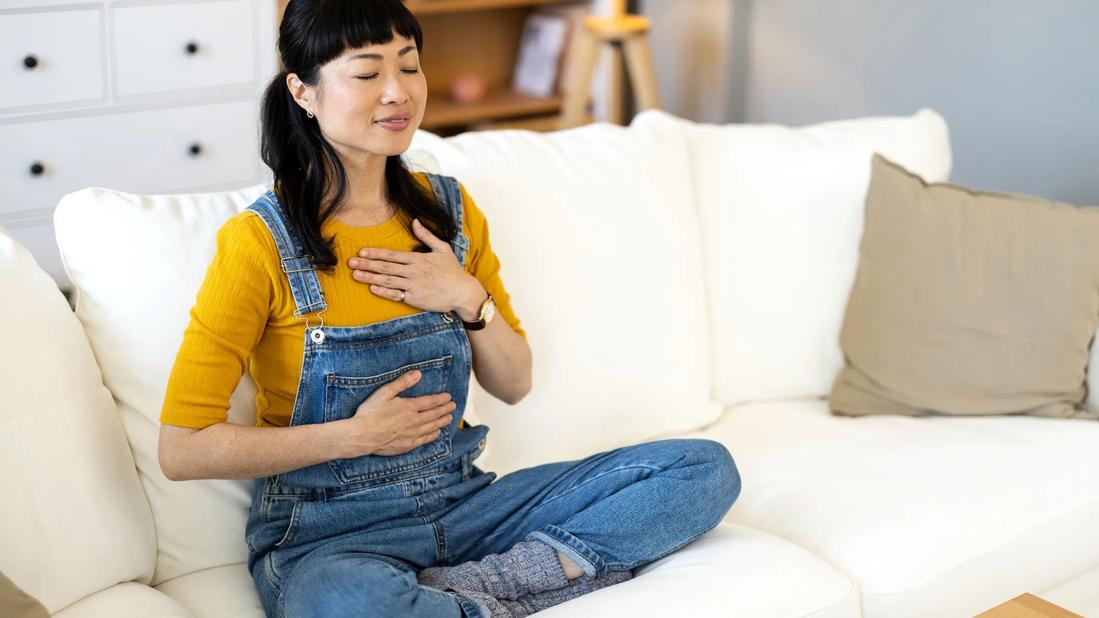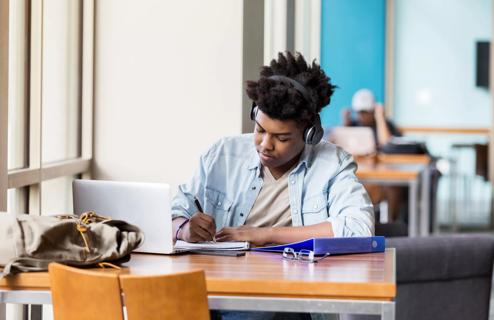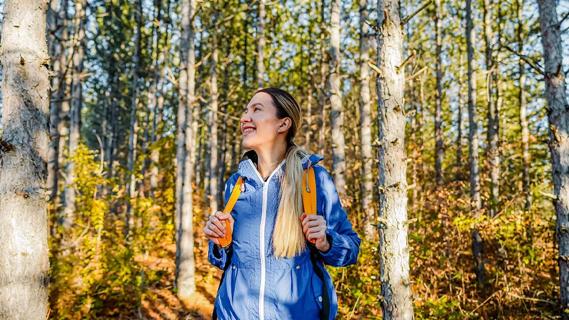From breath meditation to yoga nidra, all types of meditation aim to help you feel calmer, more relaxed and present

Tending to your mental health is just as important as taking care of your physical health — and meditation has become an increasingly popular way to nurture your whole self.
Advertisement
Cleveland Clinic is a non-profit academic medical center. Advertising on our site helps support our mission. We do not endorse non-Cleveland Clinic products or services. Policy
If you’re not yet familiar with how to do it, meditation might seem mysterious, time-consuming or too difficult. But it’s quite different from what you may think it is, says yoga therapist Holly Wilgus, E-RYT 200.
Wilgus explains what meditation is and how to meditate, including different types to try.
There’s plenty of hard science to show that meditating can bring some profound changes, especially when it’s done in conjunction with other healthy lifestyle habits. In fact, more than 1,500 research studies back up the many benefits of meditation.
Meditation has been shown to help improve:
“At its core, meditation helps you calm your mind and develop the ability to stay in the present moment,” Wilgus explains. “You’re not thinking about things that happened yesterday that still bother you, or dwelling on anxiety about future things, like looming deadlines and long to-do lists.”
Trying to figure out how to meditate properly? Here’s the thing: There’s no single right way to meditate, and the practice can take many forms.
“Each type of meditation has the same goal: calming the busy mind and helping us be present and find some balance in our lives,” Wilgus says.
Advertisement
Wilgus walks us through just a few of the most popular meditation options.
No matter what type of meditation you choose, it’s important to think about your breath. But this type specifically focuses on the very act of inhaling and exhaling.
“You’re bringing awareness to the natural process of breathing by following the in-breath and out-breath,” Wilgus explains. “Focusing on your breath gives your mind something to do, and it can help you in so many ways. It’s profoundly effective.”
When you breathe better, you feel better. Deep breathing (aka diaphragmatic breathing) has been shown to help:
Mindfulness is a big piece of meditation in general, as it encourages you to focus on the here and now. But mindfulness meditation in particular employs all of your senses to observe what’s going on around you and how you feel.
“Mindfulness asks you to use all your senses to check in,” Wilgus says. “Ask yourself: What does your body feel like? Does something feel tight? Sore? Tired? What kind of thoughts and emotions are you experiencing?”
You’re not thinking about the past or the future. You’re in the current moment — just you and your body and your breath. In mindfulness meditation, you’re encouraged to observe different thoughts, feelings and sensations without judgment.
In guided imagery meditation, someone else — whether in-person, online or via an app — verbally walks you through a mental journey of relaxing mental images or memories. For example, they might ask you to think about:
To help transport you back to that place, your guide might ask leading questions that involve all of your senses. Are you somewhere where the trees smell like pine or the air smells like salt? Do you feel warm sand beneath your toes? Do you hear ocean waves? How does the sun feel on your skin?
“Using these mental images guides you to places you recognize, relying on memories that you have positive associations with and that bring a smile to your face,” Wilgus explains. “For example, if you’re remembering your favorite vacation, you start thinking about what a great way it was to relax and recharge.”
Advertisement
Yoga nidra (sometimes called yogic sleep) is a type of guided practice, meaning someone helps you along the meditation journey. It takes a bit longer than other types of meditation, usually lasting at least 30 minutes.
To do it, you typically lie on the floor. Though your body and mind are at rest, your consciousness is awake.
“Yoga nidra is an enhanced state of relaxation and awareness where you’re still aware, not really asleep,” Wilgus clarifies. “It allows you to access the kind of deeper brainwaves that occur during the deepest sleep cycles.”
The loving-kindness meditation, also known as the metta meditation, has Buddhist origins. It involves applying a statement of gratitude to various people and situations in your life: “May you be well, may you be happy, may you be peaceful, may you be loved.”
“This language helps us take our limited worldview and expand it out to global well-being,” Wilgus says.
You start by saying the statement to yourself. Then, you apply the same wording to your larger circle of friends and acquaintances: your best friend, your sister, even the barista you see every day at the coffee shop. Eventually, you’ll apply the same statement to difficult people in your life.
Advertisement
“When you think of someone who pushes your buttons, you wish them well, wish them happiness,” Wilgus emphasizes. “It’s a profound practice in cultivating kindness and forgiveness in relationships with people whom you find difficult.”
In the final repetition of these phrases, you extend the meditation to all beings around the world: “May we be well, may we be happy, may we be peaceful, may we be loved.”
Yes, movement can be meditative! Moving meditations are those that occur while you’re doing another activity, like:
“For some people, doing gentle movement offers an easier way to step into a meditation practice,” Wilgus says. “As you’re moving, you begin to focus your mind and, eventually, quiet your thoughts.”
These meditations can be hybrids or combinations. For example, mindfulness-based stress reduction (MBSR) is a formal practice that combines mindfulness practice with yoga.
As you look into meditation, reflect on what approach best suits you. Ask yourself:
Advertisement
Wilgus also weighs in on what to stay away from: “Avoid anything that tells you, ‘You have to meditate this way or that way,’ or, ‘This is the only right way to do it,’” she states. “There are many ways to meditate, so go with what resonates for you. There’s something out there that’s the perfect fit.”
We get it: It can be hard to begin. But Wilgus offers a few final tips that can help you figure out how to start meditating.
One last word on meditation: You don’t need to aim to quiet your mind entirely.
“Many people think they can’t meditate because their minds are so busy with thoughts,” Wilgus notes. “But that’s normal. The trick is to recognize when your mind drifts, gently and without judgment — then return to the present moment.”
Occasionally, your meditation may lead to a quiet mind, and it’s great if it does. But don’t be frustrated if that doesn’t happen often. You will still receive the benefits of meditation.
Learn more about our editorial process.
Advertisement

Breathing, exercise, mindfulness and more can help you unwind and step away from your stress

Different types of yoga poses, meditation and breathwork may help you feel more emotionally balanced

Sensory deprivation therapy can help relieve stress, improve sleep and decrease physical pain

You don’t need to have years of experience to reap the rewards of meditation — with benefits for your whole body, you only need a couple minutes to get started

While walking, be mindful of your body, your mind, your place in the world and all five of your senses as you pave a path forward, one step at a time

Thunder, waterfalls and heavy rain — these low-frequency sounds might help cancel out disruptive noises and thoughts

Immersing yourself in nature can improve both your mental and physical health

This bedtime exercise can help you fall asleep faster (and stay asleep)

The best parenting style balances enforcing rules and showing plenty of love

Tips include cutting back on sugar, focusing on exercise and managing stress

It can be harder to let go when you’ve invested time, energy and emotions — but it might be the healthier choice long term